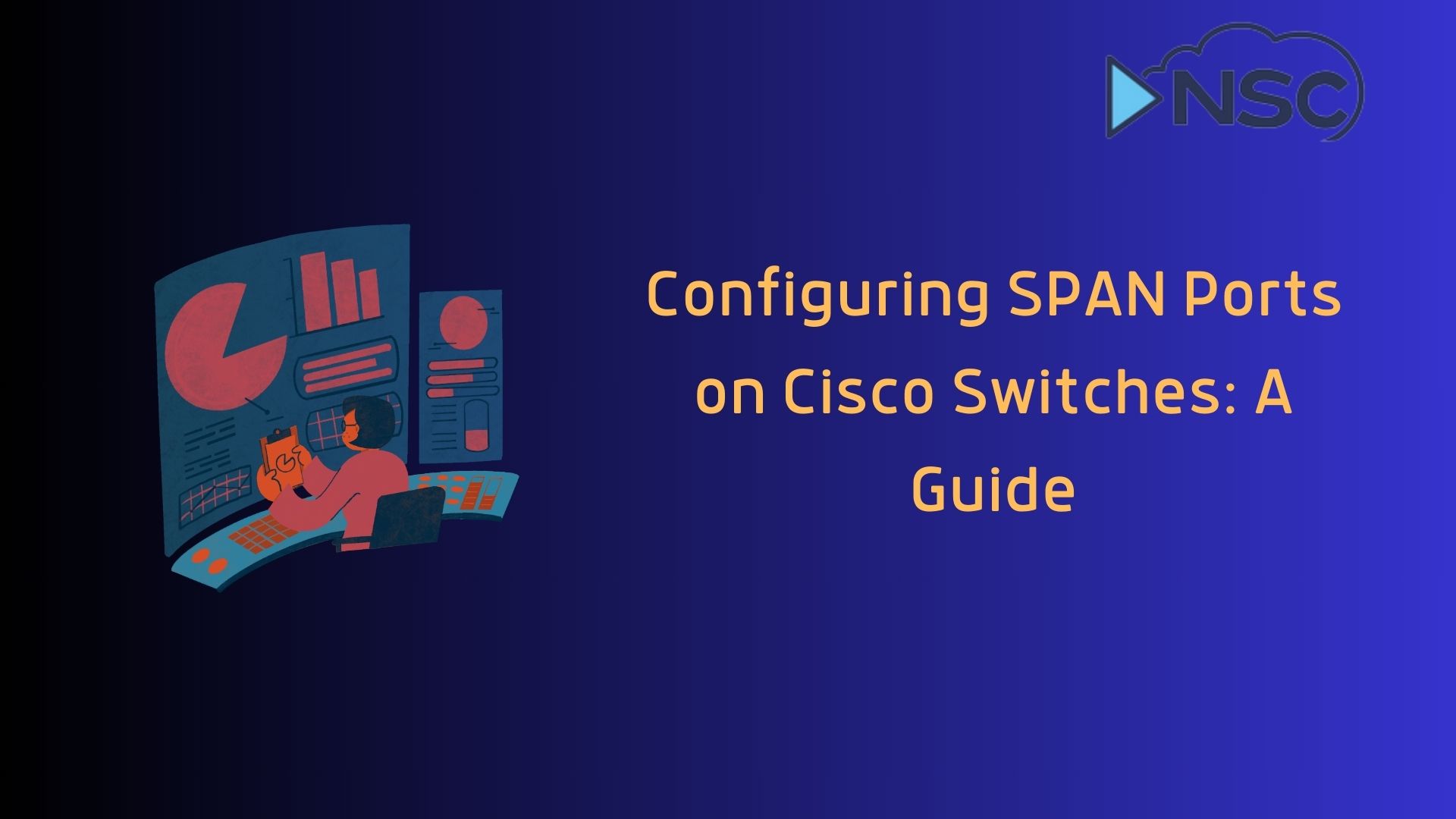Switch Port Analyzer (SPAN) ports are essential tools in network traffic monitoring, allowing network engineers and IT professionals to observe traffic as it passes through devices on the network.
This capability is crucial for both troubleshooting and ensuring optimal network performance. Focusing on Cisco switches, especially the popular Cisco 9300 model, this guide will walk you through the setup and configuration of SPAN ports, covering both foundational and advanced aspects.
In this blogpost, we will delve into the different types of SPAN sessions such as Local SPAN, Remote SPAN (RSPAN), and Encapsulated Remote SPAN (ERSPAN), explaining their applications and setup procedures. Practical examples will be provided, specifically tailored to Cisco devices, ensuring you can apply this knowledge effectively in real-world scenarios.
Understanding SPAN, RSPAN, and ERSPAN
Switch Port Analyzer (SPAN) sessions are critical for network monitoring, allowing for the real-time observation of traffic through mirrored ports. It's important to understand the nuances between the three main types:
- Local SPAN: Mirrors traffic from one or more source ports to a destination port on the same switch.
- Remote SPAN (RSPAN): Extends the functionality of SPAN by allowing traffic to be mirrored across multiple switches, which is ideal for enterprise networks spread across different locations.
- Encapsulated Remote SPAN (ERSPAN): Builds on RSPAN capabilities by adding the ability to route mirrored traffic across Layer 3 networks using GRE tunnels, making it possible to monitor traffic from anywhere within the network infrastructure.
Each type serves distinct purposes and comes with specific configuration settings, which will be explored in the following sections.
For those eager to expand their expertise beyond basic setups, our CCNP ENCOR & ENARSI training offers an in-depth exploration of advanced networking concepts and configurations, equipping you with comprehensive knowledge to tackle a variety of networking challenges.

Configuring SPAN on Cisco Switches
Before setting up SPAN sessions on Cisco switches, it's crucial to understand your network topology and identify the source ports or VLANs you want to monitor. Ensure that the Cisco IOS is up-to-date to support the latest SPAN features.
Step-by-Step Configuration
Configuring a SPAN session involves selecting source and destination ports. Here’s how you can configure a basic SPAN session on a Cisco 9300 switch:
- Select the Source Port(s):
Switch(config)# monitor session 1 source interface GigabitEthernet0/1 both
This command sets the interface GigabitEthernet0/1 as the source port, capturing both incoming and outgoing traffic. - Set the Destination Port:
Switch(config)# monitor session 1 destination interface GigabitEthernet0/2
Traffic from the source port will be mirrored to GigabitEthernet0/2.
Advanced SPAN Configurations
- Multiple SPAN Sessions: Cisco 9300 supports multiple SPAN sessions. You can set up additional sessions to monitor different segments of your network simultaneously.
- Handling Switch Congestion: Be aware of potential packet drops due to congestion. Properly configure SPAN sessions to minimize impact on the network performance.
Practical Examples
For practical application, here are two scenarios on a Cisco 9300 switch:
- Monitoring Multiple Source Ports:
Switch(config)# monitor session 2 source interface range GigabitEthernet0/3 - 4 both Switch(config)# monitor session 2 destination interface GigabitEthernet0/5
This configuration sets a range of ports as sources and mirrors the traffic to a single destination port. - Configuring for Specific VLANs:
Switch(config)# monitor session 3 source vlan 10 Switch(config)# monitor session 3 destination interface GigabitEthernet0/6
This session monitors all traffic from VLAN 10, sending it to the specified destination port.
Best Practices and Common Pitfalls
Best Practices:
- Regularly review and update your SPAN configurations to adapt to changes in the network.
- Use SPAN judiciously to avoid unnecessary load on network resources.
Common Pitfalls:
- Avoid using a production server as a destination port to prevent performance degradation.
- Ensure accurate VLAN settings to avoid losing critical traffic data.
Summary
Successfully configuring SPAN ports is crucial for effective network monitoring and management, especially for IT professionals and network engineers tasked with maintaining optimal network performance.
Through the guidelines provided, you now have the tools to set up and manage SPAN sessions on Cisco switches, including the advanced Cisco 9300 model.
This post not only helps set up basic monitoring sessions but also navigates complex configurations involving multiple sources and VLANs.
Remember, the key to successful implementation lies in adhering to best practices such as regularly updating configurations and being mindful of network load to avoid congestion and packet loss.


